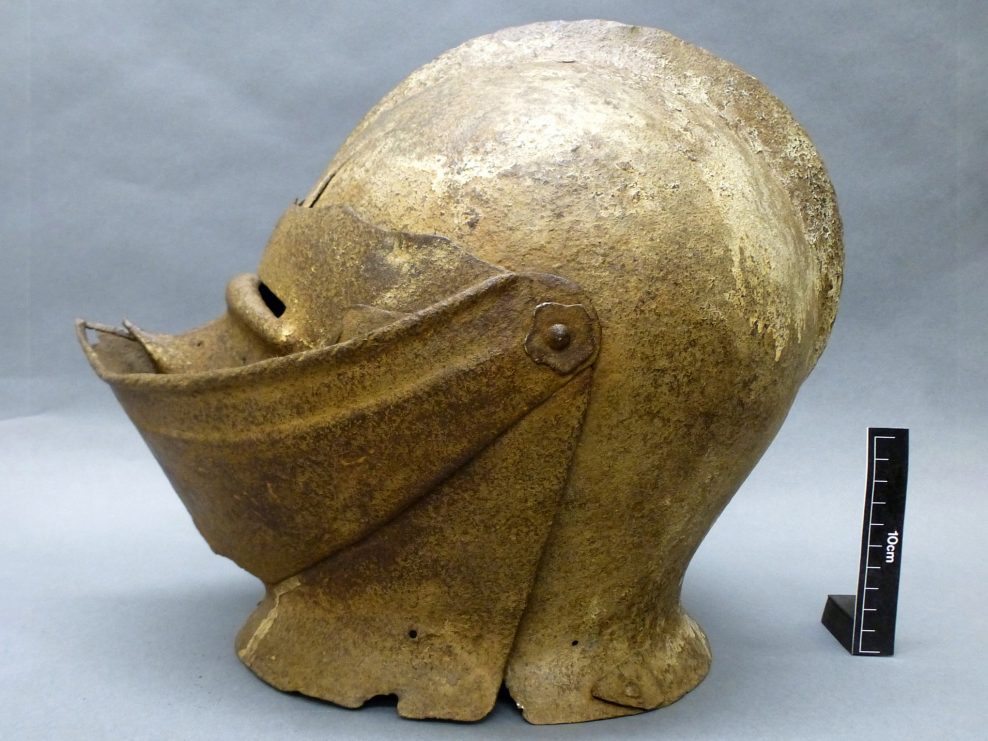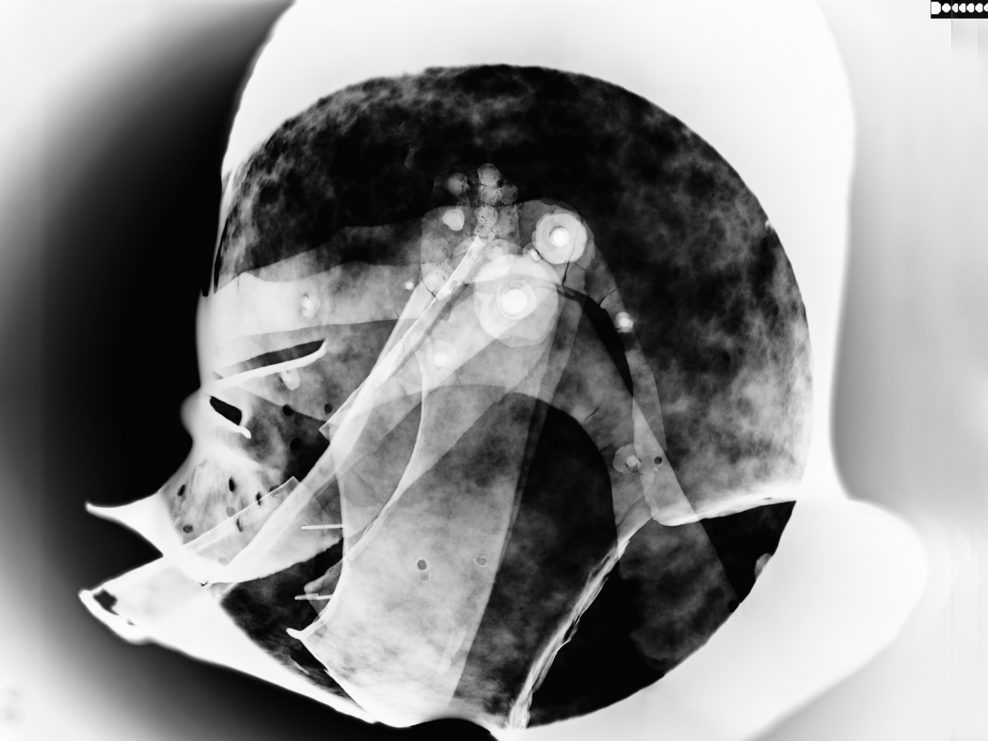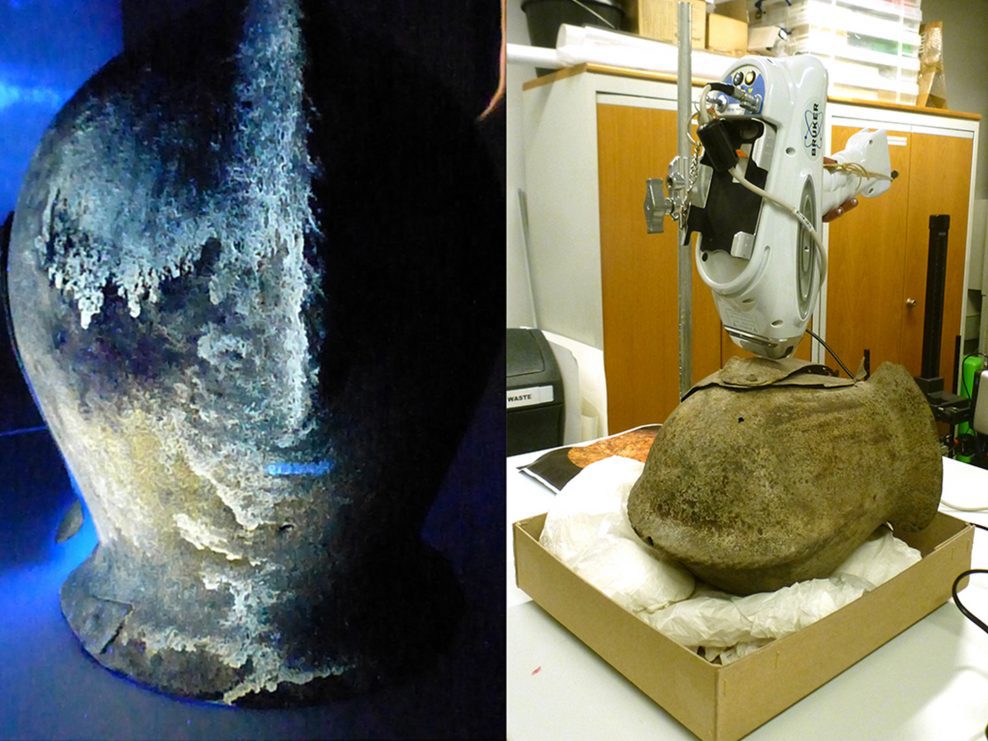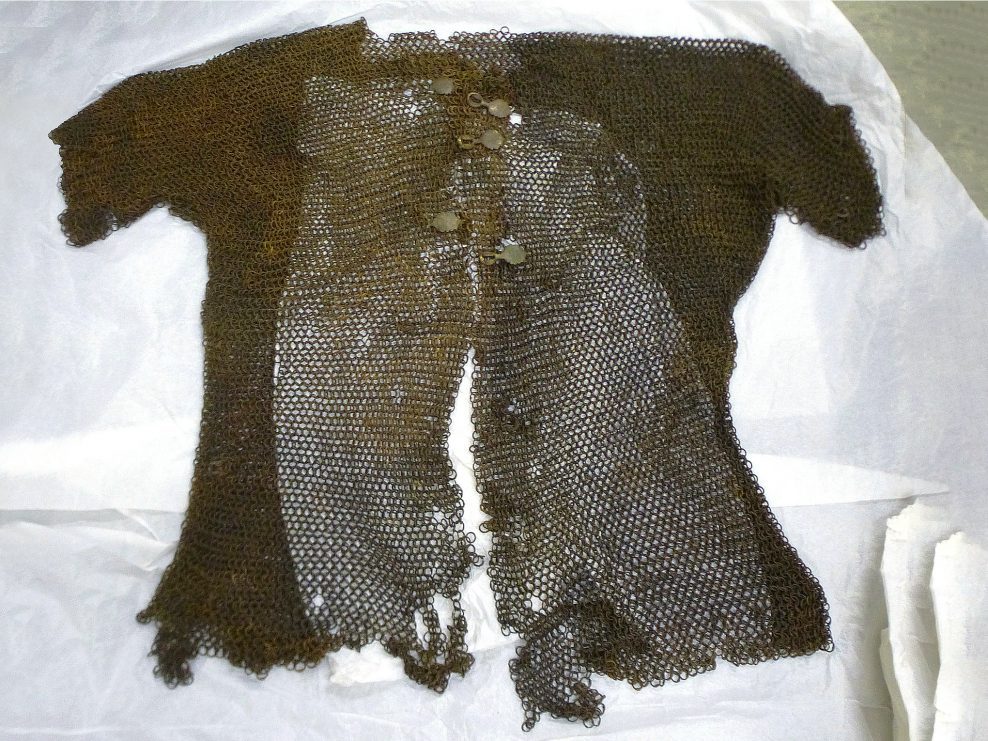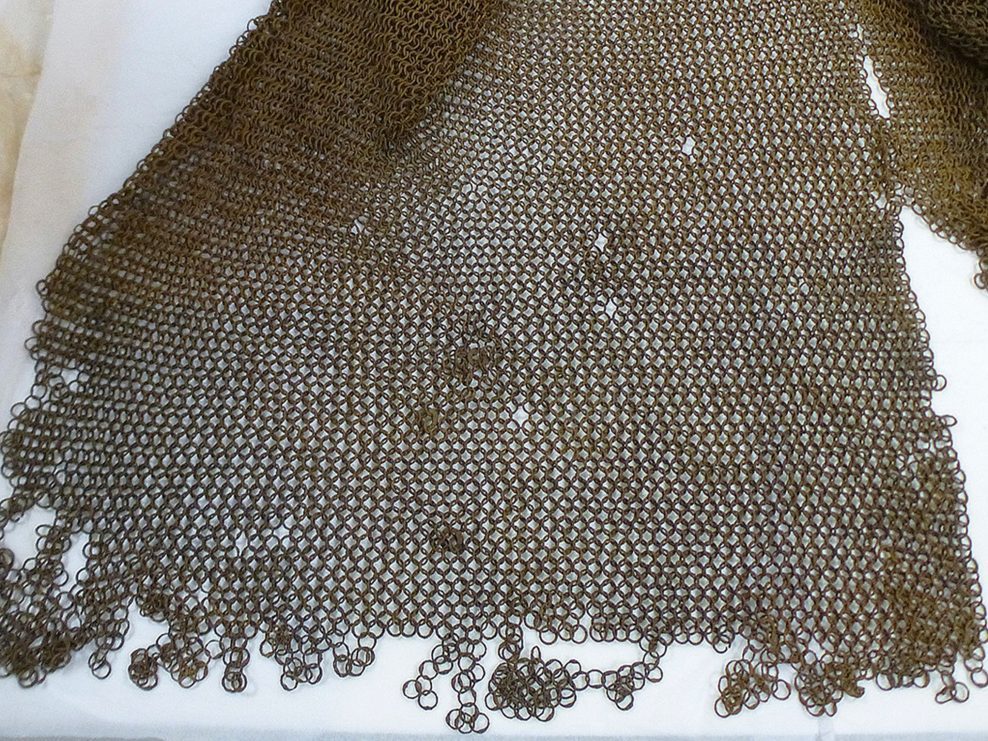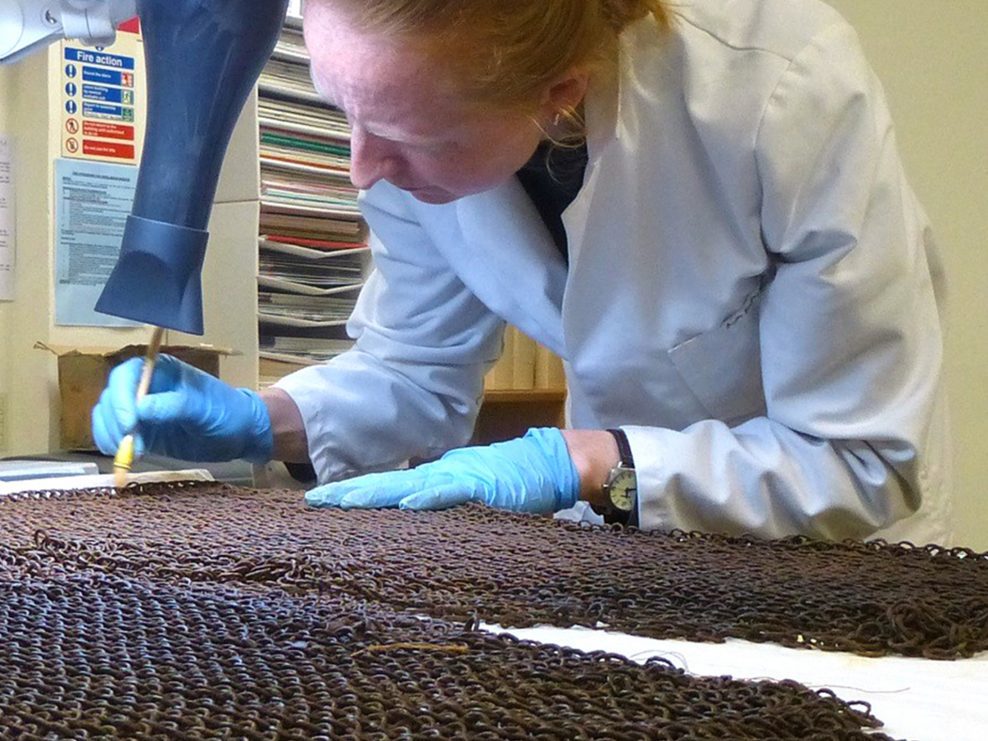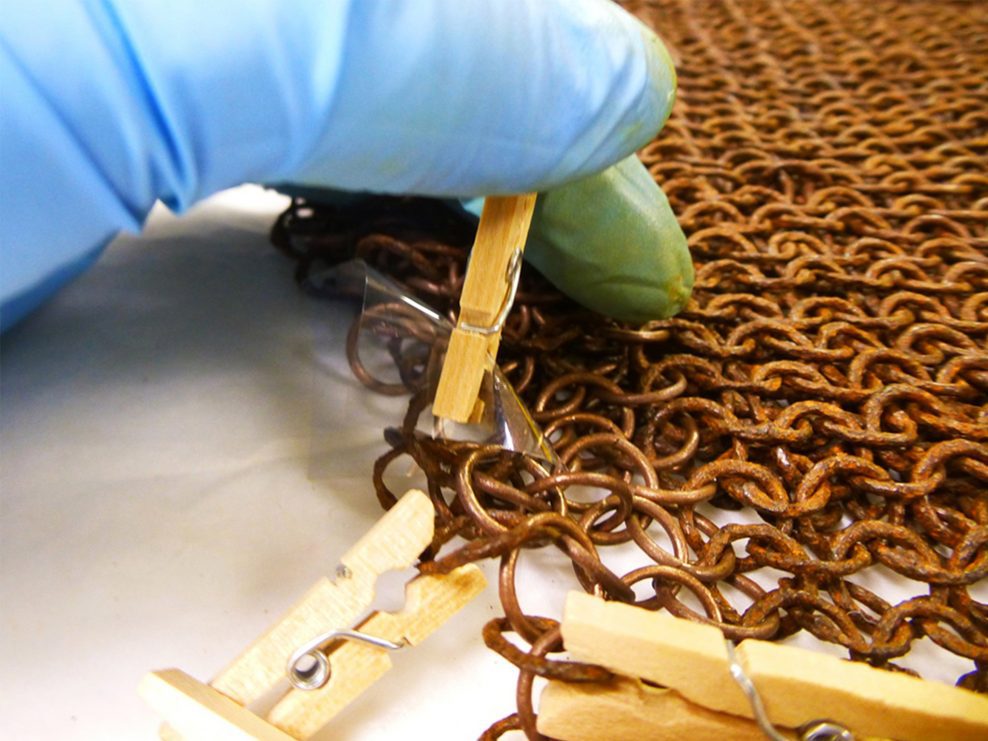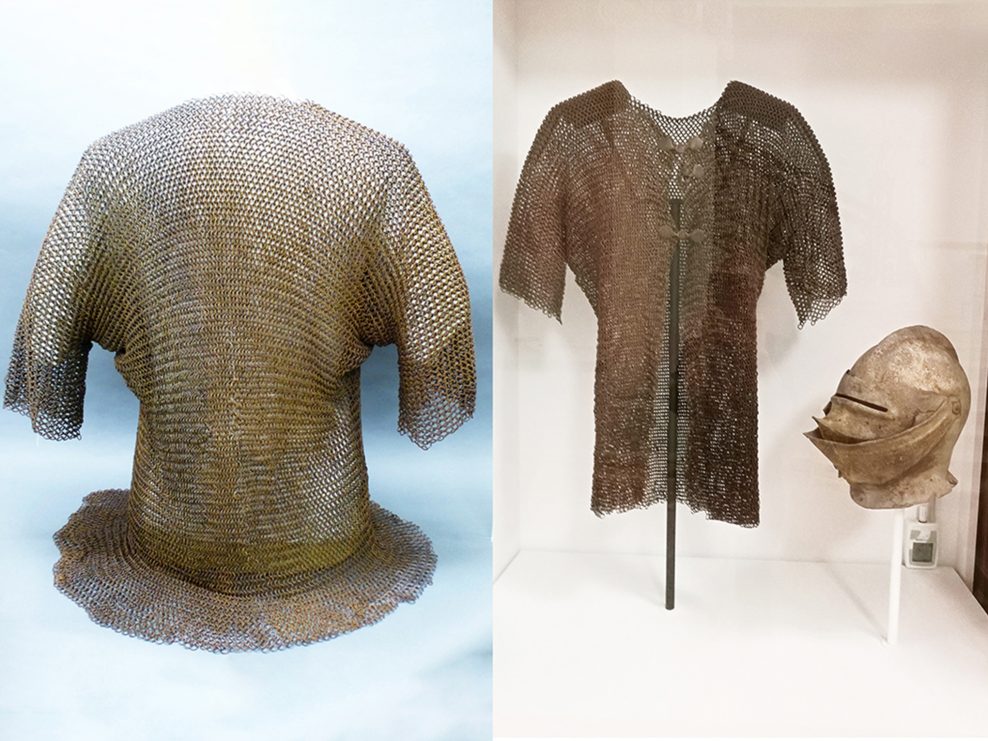Projects
Sir Richard Lee’s funerary armour, St Albans Museums
This project involved the conservation of 16th century funerary armour for permanent display in the newly-created St Albans Museum + Art Gallery. The armour consists of an iron hauberk (mail shirt) and helmet. The main focus of the conservation treatment was to halt the severe, and ongoing, loss of weakened, corroded rings of the hauberk, and to remove a disfiguring waxy surface-coating (non-original) from the helmet.
Richard Lee (1513-1575) was a soldier, engineer and adviser to King Henry VIII, with strong links to St Albans. His funerary armour is now part of the permanent collection of St Albans Museums. The helmet was a well-known, and much-loved, item, in relatively good-condition, but the mail was in too poor a condition to display, and relegated to permanent storage.
Treatment of the helmet
Initial investigation included X-radiography, to assist in determining manufacturing techniques and condition, and to detect any patterning or decoration. X-ray fluorescence analysis (XRF) was then undertaken to investigate if remains of any other materials were present. Sadly, no evidence of further decoration or materials came to light.
Removal of a more modern, opaque coating evened the appearance of the surface and revealed the metal surface and texture of the helmet. A deliberate decision was made to not apply another coating, or undertake any further treatment. The helmet was stable and being displayed in optimum, stable environmental conditions, and a surface treatment could hinder any future analysis.
Treatment of the Hauberk
The hauberk was also coated in a non-original waxy substance, which was sticky and attracted dust and dirt. However, the main concern was the thinning and weakening of the metal due to previous corrosion, causing extensive, and ongoing, loss of the rings.
Following removal of the sticky coating, each ring was cleaned of corrosion products. The next step was to repair and, in some areas, add rings, to improve its structure and stability for long-term display. This required the sourcing and patination of suitable rings to appear similar to the original ferrous rings but able to be identified as replacements.
Evidence of the use of mail shirts can be found from Celtic Europe up until the late 14th century, with very few stylistic changes over the years. Dating of the hauberk is therefore difficult, as is the estimation of its exact appearance before the loss of rings. For this reason, the conservation stopped short of ‘completing’ the structure, leaving losses where they did not impact on stability, and leaving the length and sleeves slighly jagged to indicate that additional rings may have been present.
